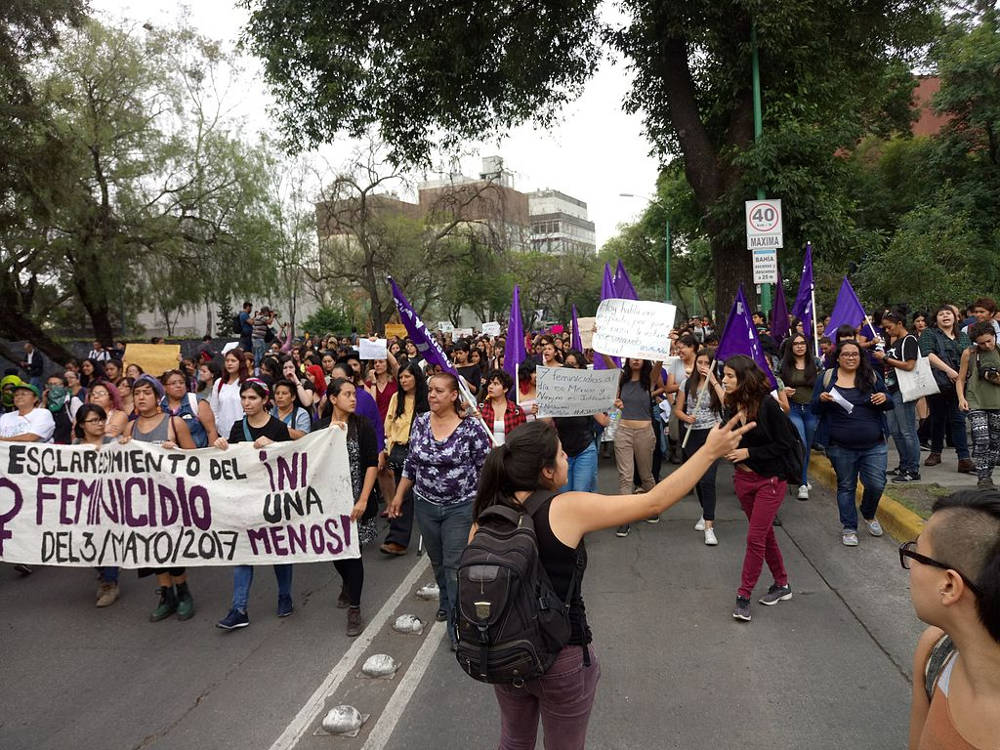BUENOS AIRES, Argentina (ViaNews) – Latin American and the Caribbean are often considered to be one of the most beautiful regions on earth. With crystal clear water beaches, exotic flora and fauna, and amazing natural landscapes, it is easy to see why so many people come to this side of the world to visit, study or live here.
However, everything changes if you are either a woman (according to the United Nations, Latin America is one of the most volatile and dangerous places for being a woman), or a human rights or environmental activist, (according to the NGO Global Witness, it is very risky being a human rights or environmental activist in this area). Now, can you imagine being both?

A survey conducted by Gallup shows that women in Latin America often feel they are not treated with respect and dignity by their male counterparts. In fact, this dissatisfaction reached some -worryingly- high levels in Colombia, Peru, Paraguay, El Salvador, Guatemala. In most case scenarios women complaint they have often been harassed by males, whether it is in the street, at work, or in their neighbourhoods.
The term ‘femicide’ which was originally pointed by North American feminists Jill Radford, Jane Caputi and Diana E. Russell can be defined as the killing of women where the motive is directly related to gender. Femicide is the result of a misogynistic view, thus, the killing is -often, if not always- perpetrated by men.
However, it is fair to argue that femicide is, in fact, the ultimate act in a chain of successive acts of violence against a woman. This is why it also includes physical, sexual and intellectual, abuse against women and girls, in fact, forced heterosexuality, criminalisation of abortion and contraception, rape, slavery, torture and incest are often thought of as part of the grey-scale that the term femicide encompasses.
This is one of the reasons why from 2015 onwards Latin America has seen a rise in numbers in the protests that occur each year against gender-related killings. The International movement started in Argentina with the hashtag ‘’Niunamenos’’ (Not one [woman] less), as you can see in my other report, the participants in this type of protests were fighting for basic human rights for women.
Moreover, Small Arms Survey also reveals how it has gathered relevant information from 25 countries and the results show that at least 14 countries from Latin America and the Caribbean have the highest rates of femicide from the data.
In fact, this violence has not stopped over the last couple of years, even though the United Nations has proposed a ‘Protocol’ for countries to uphold in order to investigate and punish all forms of violence against women. This type of legislation is not new in Latin America, as at least 16 countries have laws against femicides or violence towards women.
The violence expressed towards women leads us to the next cases of femicides: the terrorists acts committed against women who are also activists in several countries such as Honduras, Brazil and Mexico, to name a few.

In 1995 Jeannette Kawas was brutally murdered because she was an environmental activist defending flora and fauna in her home country of Honduras.
In the case of environmental activist and indigenous leader Berta Caceres who was also from Honduras, she was the co-founder and coordinator of the Council of Popular and Indigenous Organizations of Honduras (COPINH). She had received international prizes such as the Goldman Environmental Prize in 2015 for her campaigning against the dam builder in the Agua Zarca Dam. She was also an avid supporter and led campaigns on protesting against the presence of US military bases in Honduras, the feminist cause, LGBT rights and she also fought against the plantation owners and illegal logging.
She was assassinated in her home after years of being intensively threatened, in fact, the Inter-American Commission on Human Rights included Berta Caceres on its 2009 list of people under real threat during the coup d’etat that happened during that year in the country, and requested ‘’precautionary measures’’ to the Honduran government in order to offer Caceres protection. Even though some military personnel has been momentarily arrested as they were involved in this killing no one has taken responsibility for the loss of Berta’s life.
Another example is In Brazil, Mariella Franco was murdered last March because she was a human rights activist going after the ‘big guys’ who are corrupt, as you can read on this report.
In Colombia, Alicia Lopez Guisao who helped with distribution of food to Indigenous and Afro-descendant communities and who was a leader of the Asokinchas community was murdered at almost 9 am when she was about to leave her local supermarket. The previous year Yoryanis Varela who was a member of the Wiwa tribe, and who defended women’s rights in her community was also murdered.
And the list, unfortunately, continues. Even though these women have lost their lives, their struggles are followed by every single woman who decides to change the ways of these societies and the obsolete patriarchal system in order to become a defendant of basic human rights for everybody, equality and protection of the environment.







